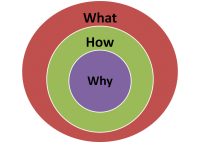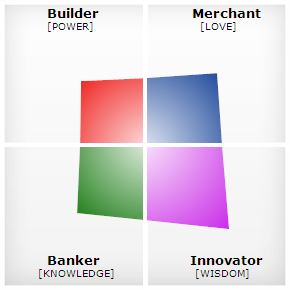 Social Media ROI Baptism (with apologies to clergy everywhere)
Social Media ROI Baptism (with apologies to clergy everywhere)
There’s an old joke about a man whose pastor decided that it was time for him to be baptized into the faith. So the pastor took the man down to the river and, after saying the appropriate words, dunked the man’s head into the river for a few seconds. When the man’s head was out of the water and he had shaken the water off his face, the pastor asked him if he believed. The man said that he wasn’t sure.
So the pastor said some more words and dunked the man’s head into the river for several tens of seconds. When the man’s head came out of the water for the second time and he had caught his breath and shaken the water off, the pastor asked him again if he believed. And again the man said he wasn’t sure.
Getting frustrated, this time the pastor regaled him with a full sermon on why he needed to believe and held the man’s head in the river for a full minute. When the man’s head was finally released and he spluttered and shook the water off and took several deep breaths, the pastor asked for a third time if the man believed. And this time the man said that he did indeed believe.
Just to make sure that the baptism had really been effective, the pastor asked the man what he believed. And the man replied that he believed that the pastor was trying to drown him.
With so much emphasis on social media these days, one could wonder how much of the blog postings and social media content to believe. This is especially true now with the focus on social media return on investment (ROI).
Do you believe that social media has value in building your relationships with your prospects and customers? I certainly do. Do you believe that you need to post interesting and relevant content in order to nurture those relationships? I certainly do. Do you believe that you need to interact with your customers, sometimes in almost real time, via social media? I certainly do.
Do you believe that you can put absolute numbers, in dollars and cents terms, on the results you are gaining from your social media efforts? I certainly don’t. And you can immerse me in words and arguments and articles and posts until day turns into night and I think then that I’ll only believe that you are trying to drown me in “facts” until I acquiesce to believing something.
Don’t get me wrong here. I do believe that our social media efforts, properly directed and executed, are important. And that they do provide a return on our investment in both tangible and intangible ways. But when I’m asked to prove it with debits and credits and dollars and cents I’m afraid that I have to revert to faith alone. Because I don’t believe anyone has yet to come up with a proof that an accurate equation exists.
I’d love to have your opinions on this viewpoint. And thanks for reading.
Scoop.it









